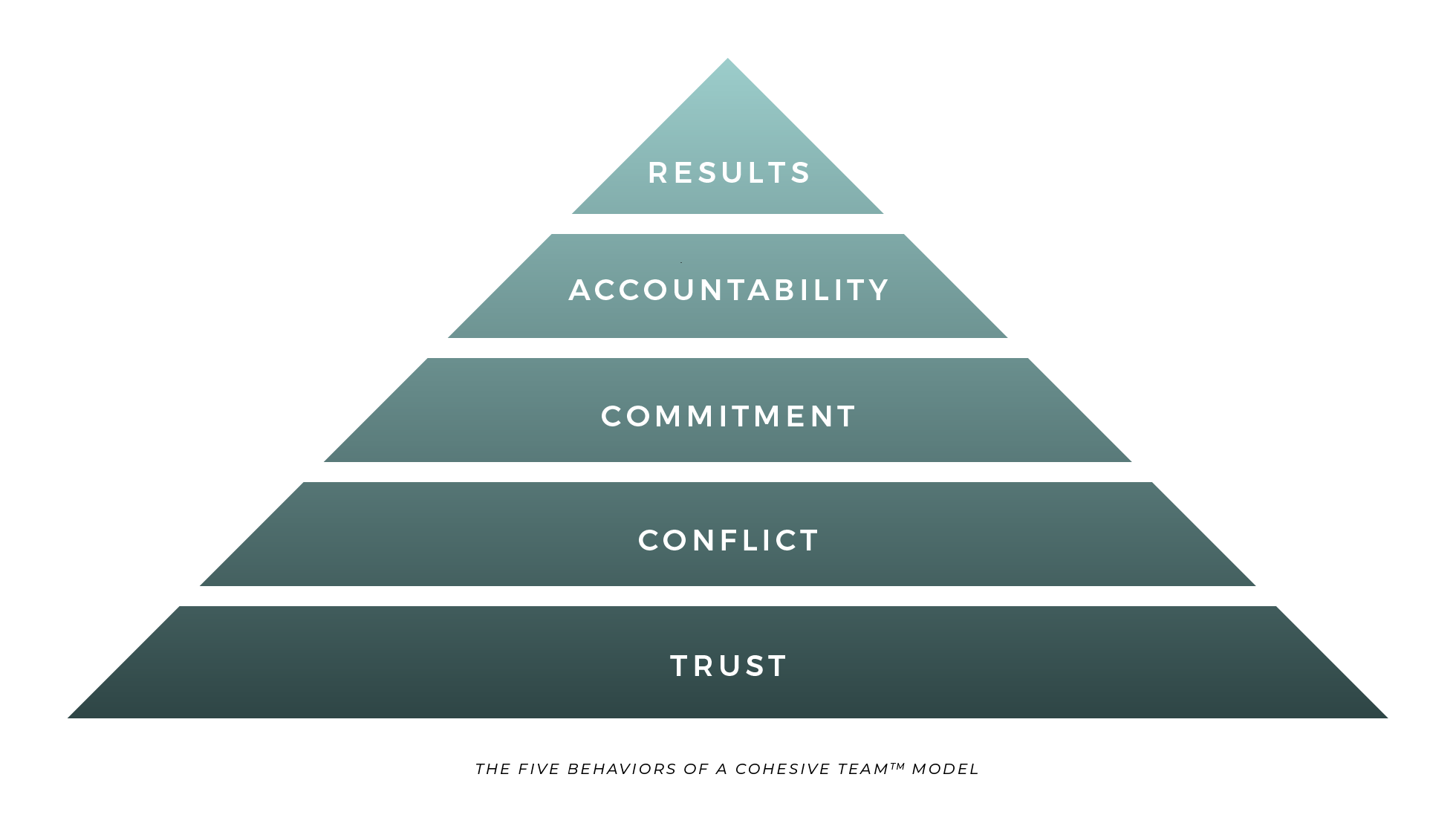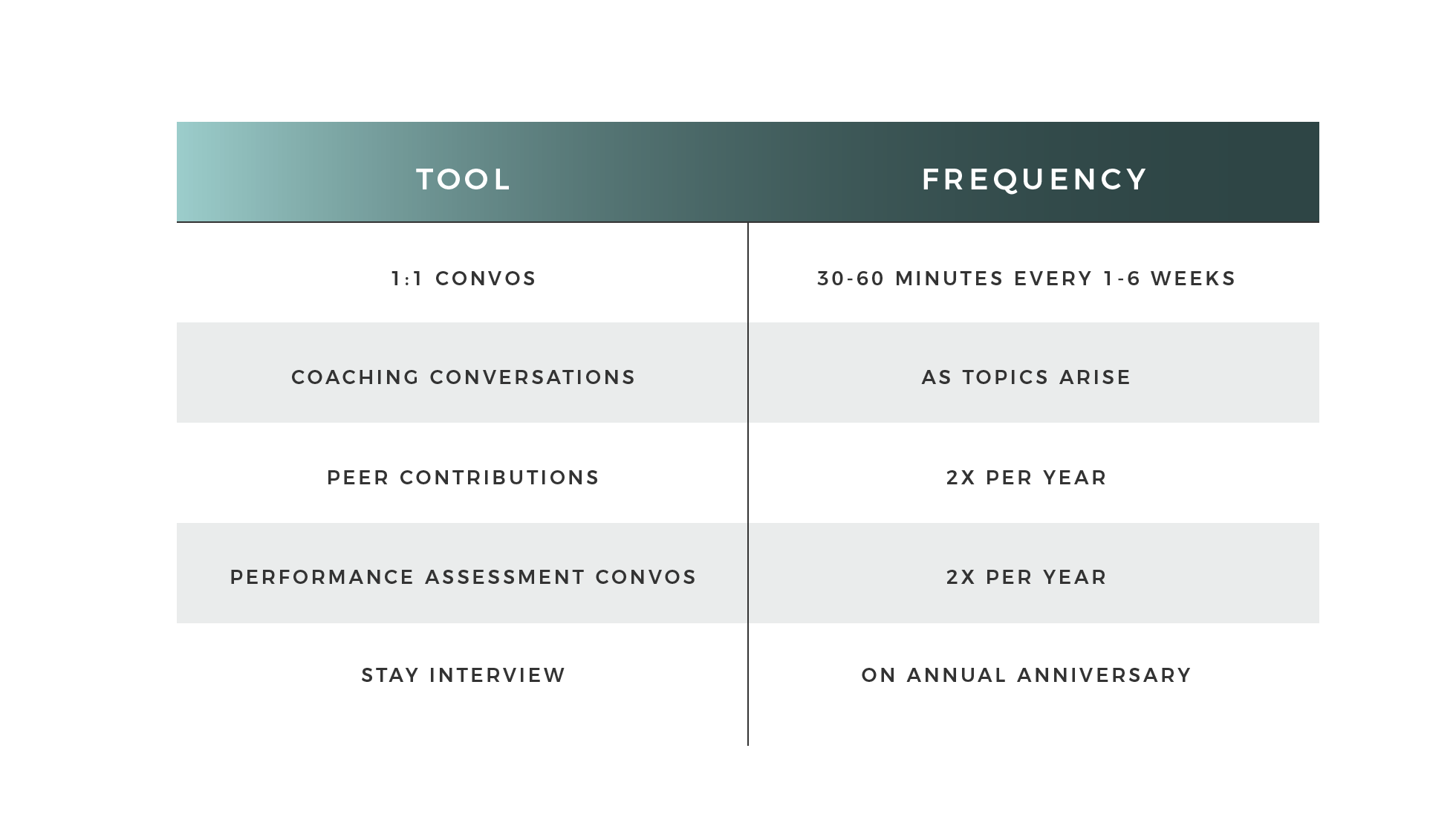How to make your Performance Management Process not suck…
The words “performance management” trigger all kinds of stress responses from employees and managers alike. The person on the receiving end of a performance review hates it just as much as the person who delivers it. No one looks forward to this tedious, uncomfortable, and ambiguous process. Yet we just keep doing it because that is what we have always done.
If your performance management process is not treated as an ongoing conversation between an employee and their manager, I challenge you to throw your whole system out and rethink it, because that is what performance management should be — a conversation… one that never ends. One with no surprises. One that you both look forward to because instead of instilling fear and stress, it proactively avoids these responses.
Those who know me also know that my ideas can be provocative and my solutions are not one size fits all – I have worked at companies of all sizes with varying degrees of red tape. Currently, I work at a small company of less than 40 people and this system works great. Will it work for your company? Maybe, maybe not – but worth consideration.
I would argue that this conversational approach to performance management works in both professional AND personal environments, so if what I share does not work at your company, it might still be helpful in your personal relationships — so give it a go.
The idiosyncratic rater effect:
If you are a student of Marcus Buckingham, you may have read his article in Harvard Business Review titled “The Feedback Fallacy”. The traditional performance review is nothing more than a steaming pile of… feedback.
Here is Marcus’s take on feedback:
“The first problem with feedback is that humans are unreliable raters of other humans. Our evaluations are deeply colored by our own understanding of what we’re rating others on, our own sense of what good looks like for a particular competency, our harshness or leniency as raters, and our own inherent and unconscious biases.”
This phenomenon is called the idiosyncratic rater effect, and it’s large (more than half of your rating of someone else reflects your characteristics, not hers) and resilient (no training can lessen it). In other words, the research shows that feedback is more distortion than truth.
This is why, despite all the training available on how to receive feedback, it’s such hard work. Recipients have to struggle through this forest of distortion in search of something that they recognize as themselves. “
A conversational perspective:
If you shift your performance management process away from a formalized annual review template to a series of ongoing conversations, you also shift from a place of feedback based on idiosyncratic ratings to an approach that teaches your managers how to have ongoing and real conversations about performance, you will see a seismic shift in establishing a foundation of trust in your organization. Anyone who has studied Pat Lencioni’s “Five Dysfunctions of a Team” knows that building a foundation of trust is critical to the success of your organization. Without trust, everything else is hard. Consistent and authentic communication is the baseline of our performance management process and this established a foundation of trust that leads to healthy conflict, authentic commitment, individual accountability and finally – results.

What does this “ongoing conversation” model look like?
There is no panacea, each company will have an natural and organic cadence of conversations that works best for them. At Element Three, we combine our management tools and connect them as an ongoing conversation about performance and development.
Here is what it looks like:

While each of these components could be a blog post on their own, let’s focus on how the interconnectivity of these pieces work to create a full experience around performance conversations throughout the year.
1:1 meetings:
The cadence of these meetings is custom to the individual and the manager. If they need to meet weekly for 30 minutes, great. If monthly for an hour works better, go for it. If you are an EOS company, you will be familiar with the L10 format we use to shape these conversations. The important thing is that this meeting focuses on the current priorities for the individual and how the manager can help. This baseline interaction creates open lines of communication to connect the two about what is important now.
Coaching/Accountability conversations:
Immediate and specific conversations to redirect, correct, praise, or discuss issues as soon as they come up. These can be initiated by the manager or the employee as coaching can go both ways.
Peer contributions:
(2x per year, whole company at the same time)
Two co-workers are selected to answer 2 questions:
- What does this person do well?
- How could they improve?
It is critical that this process is NOT anonymous. I could do a full blog post on the toxic nature of anonymous feedback but for this purpose I will just say trust me – stay away from anonymous inputs. This provides an opportunity for your employees to have CONVERSATIONS with each other to gain clarity or ask for more detail.
Performance Assessment:
(2x per year, whole company at the same time)
- KEEP IT SIMPLE. The assessment is simply a mechanism to document and continue the conversations that have already been happening in 1:1’s and coaching conversations. Our assessment has only 5 questions and the answers are brief. BOTH parties provide answers to questions and it is a double blind assessment so both sides need to be completed before they are visible. This eliminates biases in answers based on what the other side has said.
- NO SURPRISES. Discussion around alignment with Core Values and GWC (do they get it, want it, and have the capacity to do it). Not an opportunity to share all of the “feedback” you have been saving over the past 6 months and not a place to focus only on recency bias. This is a progress report on how things are progressing that you are already talking about. This assessment also asks the employee what is working and what is not working to make sure there is a focus on continuous improvement and conversation for both sides.
STAY interview:
1x per year on their anniversary date. Many times your anniversary goes hand in hand with a performance review so instead of a celebration it can be something you fear. This is the time to really focus in on the employee and ask them why they stay and when they last thought about leaving. If you have established a foundation of trust, their answers will not surprise you and they will be transparent with their answers. The STAY interview is comprised of 5 questions and is meant to be a conversation, focused on the employee’s inputs, NOT on performance.
5 questions:
- When you come to work each day, what things do you look forward to?
- What are you learning here?
- Why do you stay here?
- When was the last time you thought about leaving our team? What prompted it?
- What can I do to make your experience at work better for you?
How do you get started?
This shift is a top-down initiative that requires your leadership team to walk the walk first. You must have a culture of authenticity and accountability in order for this to work. Putting a system like this in place takes time and effort. The business case is an easy one as this process eliminates 95% of the drama that comes with:
- surprising people
- assessing performance 1x per year
- using a stale format of feedback that everyone dreads
- failing to teach your organization how to have consistent conversations around performance.
When you minimize drama, all of that mental and emotional energy is redirected into productive and healthy relationships. At the end of the day, shit just gets done because you have shifted from a culture of surprise and fear to one of trust and transparency.
So, how does your organization manage performance?




